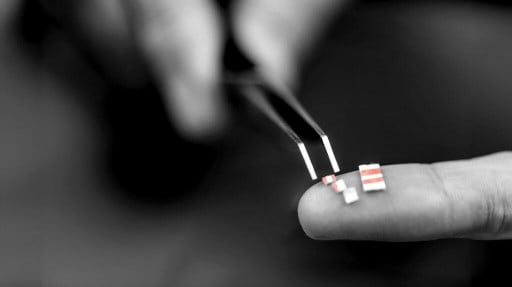
An option for surgical weight reduction is the gastric band. It is prescribed for patients who are morbidly obese and have not been successful in losing weight by diet and exercise alone. Adults constitute the majority of patients.
On the other hand, it might be a viable option for a teen's treatment—an adjustable silicone band around the stomach. One end of the round is fastened to a skinny, bendable tube. The port is a circular opening that the line leads to. The band is often placed around the upper abdomen during surgery.
The port is surgically implanted below the patient's ribs. Needles and syringes inject saline solution into the port, which travels via the tube and into the band. The band tightens and widens as a result of the fluid. The healthcare professional can adjust the band's circumference via the port.
The addition of salt causes the bar to contract, squeezing the upper abdomen. This makes a convenient pouch for holding food while eating. The meal is lowered into the remainder of the stomach and digested gradually over time. Compared to a full stomach, the pouch is rather small. In other words, it speeds up the process of feeling full. It restricts how much food they can eat.
Why Would My Adolescent Require Gastric banding?

The FDA has not yet cleared gastric bands for patients younger than 18. It's not too late to do the procedure. But further study is needed to determine whether or not this is beneficial for teenagers. There is evidence from a few studies that surgical weight loss can benefit the health of obese adolescents.
The health risks associated with being overweight can be avoided, at least temporarily, by an adolescent. The list goes on and on, but some examples are type 2 diabetes, sleep apnea, excessive blood pressure, and cardiovascular disease. Bullying and other social issues may improve after surgery. Although gastric banding has been used on adolescents, the long-term effects on a teen's growing body remain uncertain.
Healthcare providers will only prescribe bariatric surgery for teenagers in exceptional circumstances since the procedure's long-term effects are yet unknown. If a youngster has a BMI of 40-50, their doctor may recommend weight loss surgery.
Teens with a BMI of 35–40, in addition to other health issues, including type 2 diabetes or sleep apnea, may be recommended for surgery. Surgery may be an option if a kid has tried and failed to lose weight through more conventional means.
Is It Safe For Teenagers To Undergo Gastric Banding?
Weight loss surgery carries the same inherent dangers as any other surgical procedure. There are several potential side effects of gastric banding, include:
- Infection
- Pain
- Too much blood loss
- Tissue clots
- Possible fatalities associated with anesthesia
How Can I Prepare My Adolescent For Gastric Banding?

Your youngster should ideally:
- Be close to their full adult height regarding their physical development.
- Have developed your mental and emotional faculties
- Recognize the need to make adjustments to your lifestyle and be willing to do so
- Be backed by loving, caring loved ones
If an adolescent has any of these, the procedure should be avoided:
- Disinterest in making the post-op dietary adjustments that are necessary
- Untreated mental illness or eating problem
- Prader-Willi syndrome
- Are you pregnant or nursing?
The decision to have gastric banding surgery is a monumental one. Preparatory classes for your adolescent's post-op life will likely be recommended. The patient must be willing to adopt and stick to new eating and drinking habits to have successful surgical outcomes.
The temporary stomach incision soon expands to its full size after surgery. Your kid will have a very limited appetite. In addition to making you sick, overeating may cause you a lot of trouble.
In addition, your adolescent will need to take a multivitamin and mineral pill daily. Some youngsters might not be enthusiastic about doing these tasks, or they could forget.
What Occurs During Teen Gastric Banding Surgery?
In most cases, it takes to perform gastric banding surgery is between 30 and 60 minutes. The procedure is as follows:
- Your pediatrician will insert an intravenous (IV) line into your kid's arm or hand. A vein is inserted into a patient's vein so fluids and medication may be administered. Your youngster will be sedated and put to sleep before the procedure begins.
- The surgeon may make anything from one to five incisions in the stomach. The surgeon operates using little instruments through these incisions. One of these is a little camera that allows the doctor to watch the procedure on a screen.
- Surgeons often apply the band across the upper abdominal area. The port is surgically implanted underneath the patient's skin and ribs.
- Stitches or surgical glue are used to close minor wounds. The cuts are bandaged up.
Related pages
IBD: Mental health interventions may improve Crohn’s, colitis symptoms
Share on PinterestNew research suggests that mental health interventions like therapy may help impro

Statins may help lower Alzheimer’s and dementia risk
Share on Pinterest Researchers recently found that statins could help lower dementia risk in people

MS: Ancient DNA holds clues about origins and genetic risk
Share on PinterestCan ancient bodies reveal some of the secrets of multiple sclerosis? Design by MNT

AFib: Medical cannabis may increase risk two-fold
Share on PinterestUsing medical cannabis may increase the risk of AFib, a new study finds. J. Anthon

Anxiety: LSD proves effective in phase 2 clinical trial
Share on PinterestA new trial finds that LSD might have the potential to treat anxiety. microgen/Get

ADHD Identified as a Risk Factor for Developing Mental Disorders
New research found that people with ADHD may be at risk for other mental health disorders like depre

